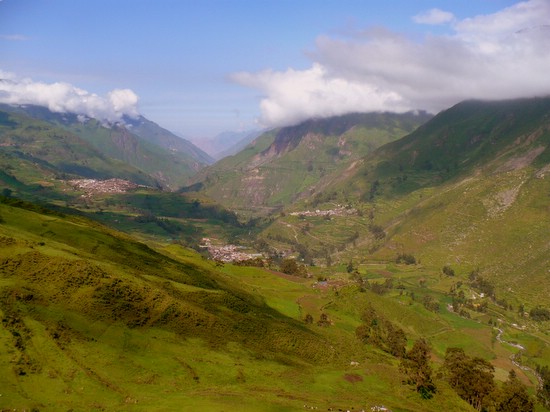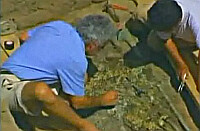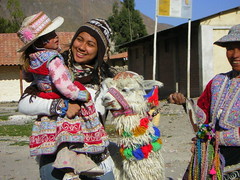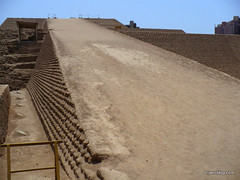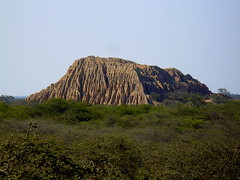Maria Reiche

Maria Reiche
Born in Dresden, Germany, the young mathematics and geography student left her country with no real wish to come back – in 1932 a man named Adolf was rising to power but was not her kind of future leader. Looking for a way out, she applied for a job as a nanny for the children of a German consul in Cusco, Peru. She was hired, sailed to Peru and never returned.
She fell in love with the country, and the Inca capital. She also took an interest in Peru’s ancient cultures, as everyone who spends time in their country does, and enjoyed visiting the sites around Cusco such as the famed Machu Picchu.
She later moved to Lima where she took a teaching job, and worked as a translator for scientific papers. Hearing from an American scientist in Lima about some newly discovered lines and figures in the Nazcan desert, she was fascinated, and as soon as the opportunity arose she headed south. On seeing the figures from the air, she was so struck by them that she decided to dedicate herself to understanding them, what they meant and where they came from.
For the next 40 years of her life, Maria Reiche lived alone in a small house in the Ingenio valley, just to the side of the vast desert plains. She studied and published, studied and published, just able to fund what was long and tiring work. With the little money she made, this foreigner was able organise aerial photographs and campaign to the Peruvian Government to persuade them to protect their heritage. Eventually, the government agreed to restrict access to the plains so that people couldn’t walk and drive over the lines.
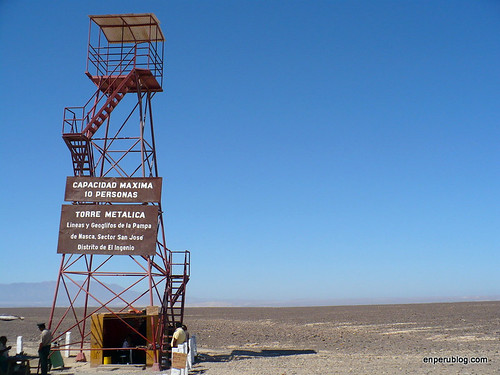
The tower Maria Reiche had built
She was able to hire couple of guards to protect the area, and spent time herself staring out over the plains from the visitor’s tower she had built looking for intruders.
Tirelessly, she spent day after day of her life under the hot sun cleaning rocks from lines, and working on her theories as to what they were for. She for one came to the conclusion that the lines were some kind of calendar, marking solstices and the passage of stars and constellations.
When her health deteriorated, and she was confined to a wheelchair, this remarkable woman still continued giving lectures on her beloved lines. She lived in a room in Nazca’s fancy Hotel Nazca Lines, which thanks to the military dictatorship of Velasco, was granted to her for the rest of her life without cost. She was given a host of honours including being declared an honorary citizen of Peru.
She grew very ill and died in 1998 at the age of 95, her work having given the town of Nazca the prosperity it has today from a booming tourist industry, as well as recognition and protection of the ancient mysterious lines that during her lifetime were declared a UNESCO World Heritage Site.
Despite not being able to definitively prove her theory, anyone and everyone who studies these lines and does prove something will owe her their success.
Tags: desert, german, maria reiche, nazca, nazca lines, unesco, velasco



